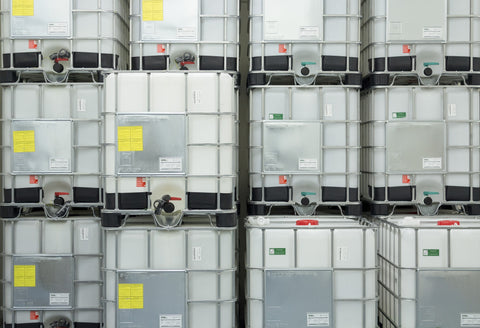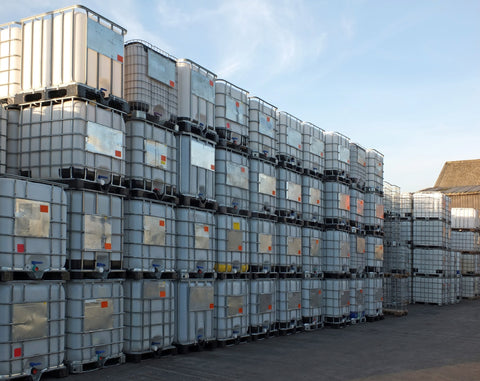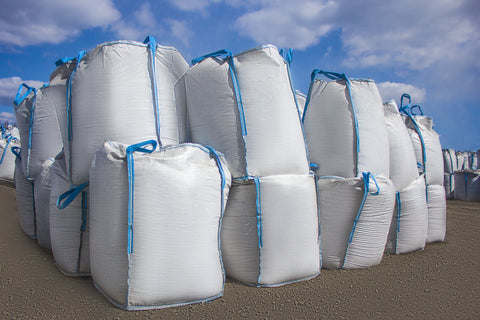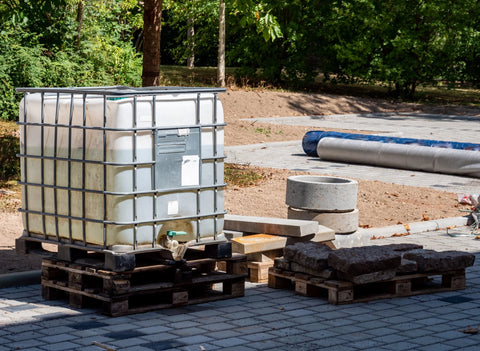What are IBC totes
IBC totes, or intermediate bulk containers, are versatile equipment used in many industries. They come in different sizes and dimensions, so it is important to understand what each one can be used for. In this blog post, we will discuss the different specifications of IBC totes, how to transport them and what they are typically used for. We will also talk about how temperature control can affect various industries and how tote heaters or heater jackets can be utilized to keep the fluid inside at the desired temperature.
IBC tote sizes and dimensions
The base dimensions of a poly composite tote tank are 40" x 48", and 275-gallon containers have an overall height of 46". Meanwhile, 330-gallon containers measure 53" tall. In addition, a 330-gallon poly composite IBC has identical base measurements as a pallet yet can hold the same amount of six 55-gallon drums. It's for mobility and includes pallet/forklift access and stack capacity. The IBC container specification supports logistic scales in transporting both liquids and solids.
Common applications for IBC Totes
IBC Totes are used across a wide variety of industries
Intermediate bulk containers are used in most industries in which large quantities of liquids, chemicals, or other materials have to travel. Intermediate bulk containers can help move materials efficiently and securely between manufacturing facilities, warehouse locations, and customer premises. Due to each sector's unique nature, many IBC configurations will be used anywhere. One of the main focuses across industries is shipping bulk materials in IBCs, which offers these organizations several advantages and economies of scale. The company will reduce shipping volumes and increase the efficiency of its products and services.
IBC totes are used in various industries to transport large quantities of material. Each sector has unique needs, and IBC totes can be configured to meet those needs.
- Food and beverage: Due to strict regulations on food transportation, IBCs are an excellent way to ensure safe transport.
- Chemicals: In the chemical industry, IBCs can be used for the storage and transportation of hazardous materials securely.
- Pharmaceuticals: Similar to the food and beverage industry, the pharmaceutical industry also has strict regulations on transportation. IBCs are a safe and secure way to transport drugs and other pharmaceutical materials.
- Agriculture: In the agriculture industry, IBCs can be used for the transport of fertilizers, pesticides, and other agricultural chemicals.
- Oil and gas: The oil and gas industry heavily relies on IBCs
Given that some of these liquids are hazardous materials or flammable liquids, it is important to understand the quality of the material that an IBC tote is made of.
Different IBC materials or types
Caged IBC Totes
Many IBC totes have a rigid steel cage or galvanized steel frame that gives the container longer durability and much more strength, especially regarding how you can store and stack them. Rigid IBC containers can hold the same amount of liquid as five 55-gallon drums. The difference between these container volumes allows for more efficient storage of materials. No matter the type of IBC tote, most of them are made of heavy duty materials that can hold anything from water to hazardous chemicals.
Stainless Steel IBCs
Stainless steel IBC containers, sometimes referred to as metal IBC tanks, offer significant chemical resistance, compatibility with long-term use, long tank life, and high hygiene. Stainless steel is often used in food and beverage products and the processing of food products. These stainless steel IBC totes are extremely widely used as chemicals, petrochemicals, and pharmaceuticals because they have greater resistance to materials and are highly useful for many acids (organic primarily) and base substances to which carbon steel can react. Stainless steel demonstrates the incompatibility of strong acids (mainly inorganic) and hydrogen-containing substances.
Are all IBC totes food grade?
Yes. Most IBC tote tanks contain food-grade BPA-free ingredients for a wide selection. IBCs for food are manufactured with virgin HDPE (high-density polyethylene) or corrugated plastic. Food grade IBC tanks are also rated for chemical storage and transportation as they are suitable for food storage and transport, making them the most versatile and highly practical containers on the market. However, not all IBC tote tanks are suitable for food use. It’s important to check with the manufacturer or supplier to ensure your IBC is approved for food use.
How can they save you both space and money?
Compare this with other container sizes, allowing more product holding simultaneously. With a 6" refill cap, these can be loaded easily with various chemicals, foods, and food. The material's heat and UV protection also guarantee that the insides of the products remain in the same place for longer periods and even in direct sunlight. This makes it easier and less costly to transport products in high volumes.
More ways IBC totes save you money and time
IBCs are a versatile and efficient way to transport large quantities of material. They can save time and money in a variety of ways. For example, they can:
- Reduce shipping volumes
- Increase the efficiency of products and services
- Be used in a variety of industries
- Be configured to meet unique needs
- Contain food-grade materials
How to transport IBC totes
To properly and safely transport IBC totes, ensure that the container is securely fastened on a pallet with straps or shrink wrap. Ensure the container is upright during transportation and is within weight capacity guidelines. In certain industries, temperature control may also be necessary during transportation, where a tote heater or heater jacket can be utilized.
It is important to understand the specifications of IBC totes to determine what size and type will best fit your needs. They are a cost-effective and efficient solution for transporting large quantities of materials in various industries.
Can IBC totes be stacked?
Yeah. It's possible. IBC totes can be easily stored in various sizes, making them advantageous. By arranging your units in an organized way, you can optimize your storage area and efficiently use both vertical and horizontal storage spaces. We recommend stacking your IBCs in storage. IBCs can be stacked while being loaded or emptied during transport and operations.
Generally, IBCs can be stacked from two to three high, and some can reach four for selected scenarios. Most IBCs can be used in two full stacks. Three full stacks are generally recommended for larger capacity IBCs. Most large capacity IBCs are suitable for three high stacking at empty; 4 high stacking is frequently recommended for storing.
Care and Cleaning for IBC Totes
In many cases, such as using food ingredients, an IBC is reusable in a returnable container carrying multiple shipments. As reusable vessels, the containers need cleaning every time to keep their contents free of contaminants that would impact the quality and quantity of the next re-filled container. It is also important to use the appropriate cleaning supplies, so no breakdown of the IBC material happens after cleanings and subsequently diminishes the value of the next product added to the container.
Temperature control for IBC Totes
As you can see with the industries listed above in the article, there are many applications for different products that could be held in an IBC tote. Due to the nature of many of these products, temperature control is a crucial part of the storage process.
There are a few ways to control the temperature of an IBC tote. One way is to use simple tarps draped over and around the totes to help control the heat loss or cooling from the outside air. Another way is to use a heater jacket or tote heater, which will insulate the tote and keep it warm and allow you to control the temperature of the products within. Both options are important to maintain the quality of the product inside. If the temperature is not controlled, it can cause the product to spoil or degrade.
Heater Jackets and IBC Tote Heaters
There are several creative solutions to keep the fluid inside IBC totes at the desired temperature. One way is using a heater jacket, which can be placed around the tote to create heat. This is a less expensive option than a tote heater, and it is easy to install and use. Another option is to use a tote heater, which is specifically designed for IBC totes. Tote heaters are more expensive than heater jackets, but they are more efficient and provide more accurate temperature control.
Regardless of your choice, temperature control is important for industries such as food and beverage, chemical, and pharmaceuticals. Properly heated or cooled fluids can maintain product quality and safety. When choosing the best temperature control method for your IBC totes, consider your budget and the specific needs of your industry. But most importantly, make sure to follow all safety guidelines and regulations.
Solving Your IBC Tote Problems
Now that we have answered the question, what are IBC totes? And much more, you should be ready to move on to the next step. If you are looking into purchasing an IBC tote or other IBC accessories like tote heater blankets, you will be able to improve your industrial process with an intermediate bulk container.







